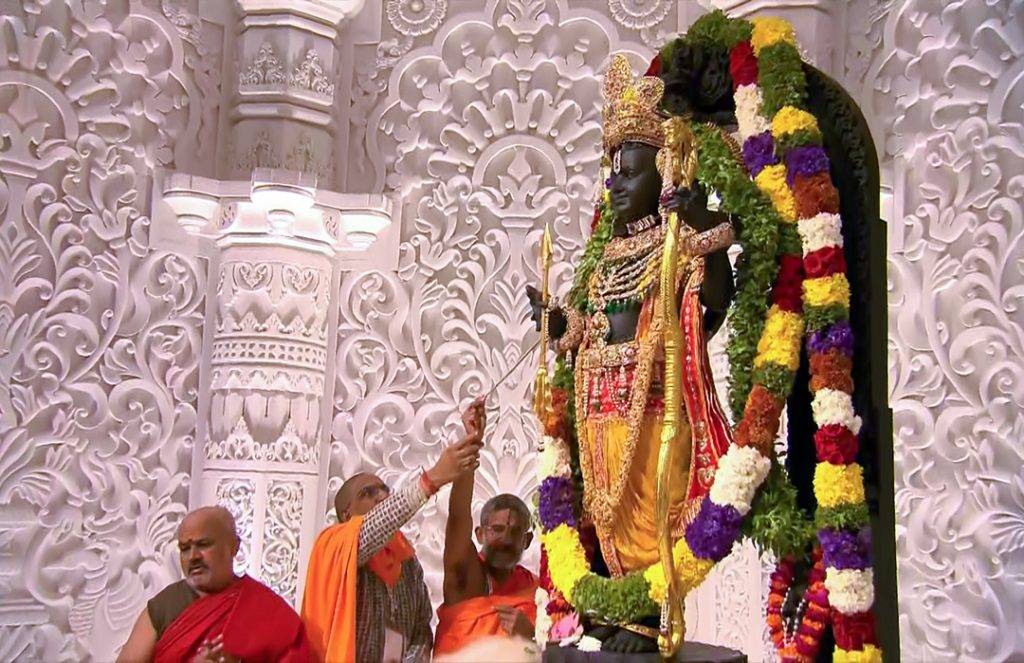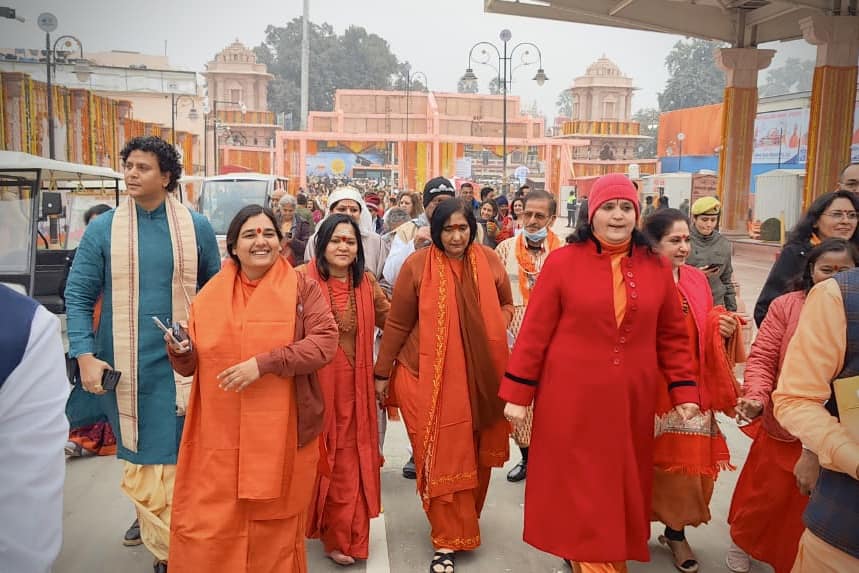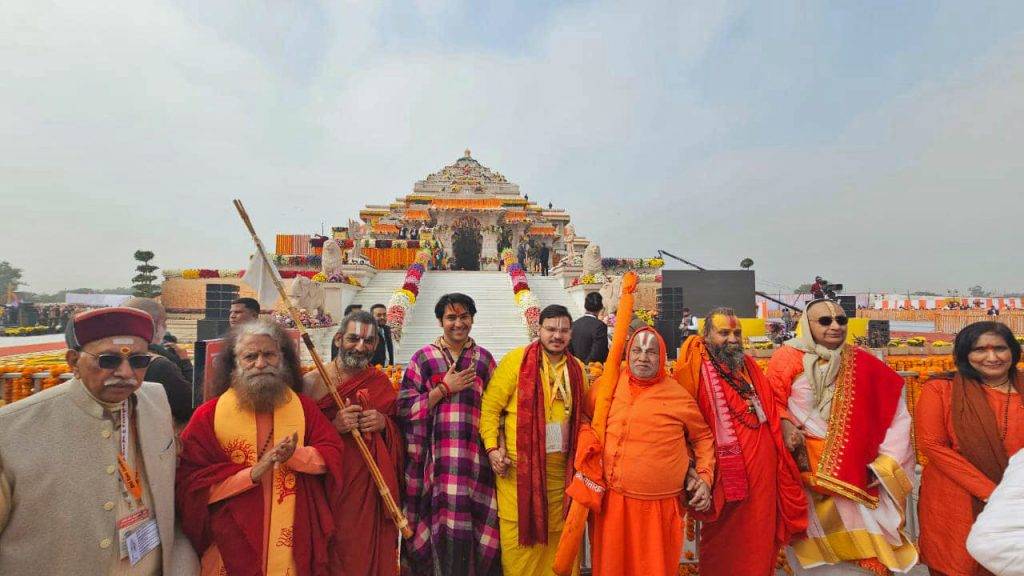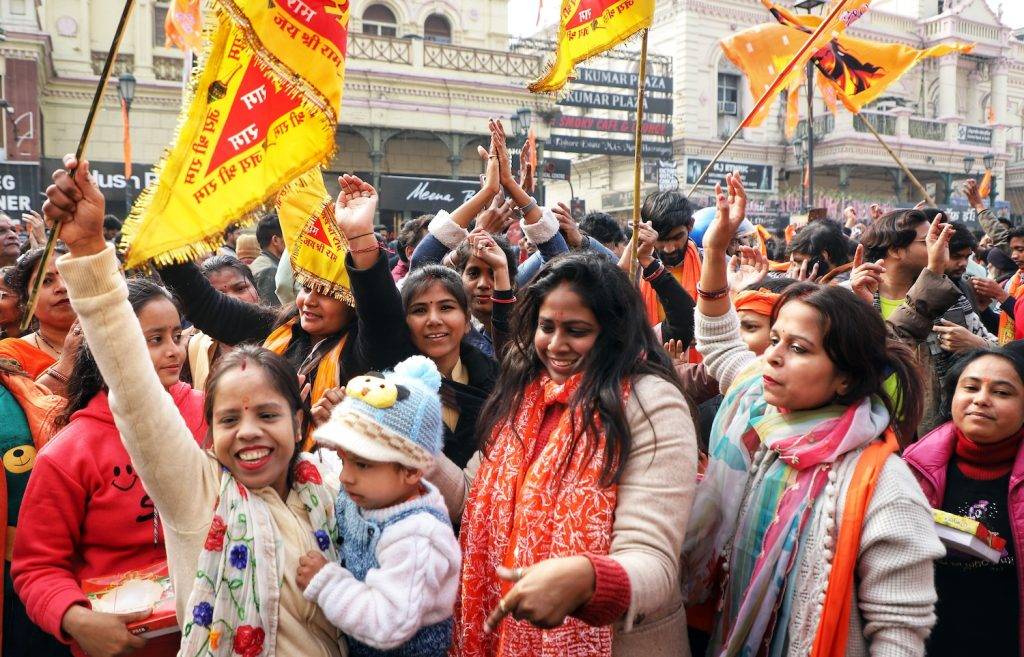A feature by Prassenjit Lahiri
Reflecting on the eve of the Ram Lalla Pran Pratishtha at Ayodhya Dham, the celebratory atmosphere in my residential complex mirrors the joy resonating across our diverse nation. The air is filled with the melodic strains of ‘Ram aayenge, aayenge, Ram aayenge… meri jhopadi main Ram aayenge‘ and other Ram bhajans, heralding the long-awaited return of Prabhu Shri Ram after 500 years of exile.
In the midst of this festive fervor, even those who typically shy away from public displays of faith are passionately sharing songs, images, and content related to Ram Lalla on various social media platforms. Hindus from all walks of life, including those who consider themselves nominally Hindu, eagerly await the dawn of Monday.
The palpable excitement is not confined to my residential complex; it reverberates throughout the nation. Strangers on Ayodhya-bound flights exchange impromptu bhajans, embodying the collective anticipation of witnessing a historic event that occurs once in a century, if not rarer. Ayodhya itself is preparing to welcome Ram Lalla with a grandeur befitting the emperor of emperors.

The significance of this moment is not lost on Hindus. As we stand at the precipice of a five-century wait coming to an end, the enormity of the occasion is instinctively understood. It is more than just the construction of the glorious Ram Mandir; it symbolizes the reclamation of a heritage, a testament to the resilience of a wounded civilization that endured violent conquests, colonization, genocide, and destruction.
Viewed through this prism, the Ram Mandir is not merely a temple; it is a narrative of endurance, survival, and the restoration of Hindu pride. It signifies the decentralization of history and serves as a necessary counter to the narrative that addressing historical grievances equates to ‘majoritarian supremacy.’


The desecration and conversion of sacred Hindu sites cannot be normalized at the expense of suppressing Hindu identity and pride. The architectural overwriting of Ram Janmabhoomi and the construction of mosques over sacred Hindu sites represent an eternal subjugation, an imperial statement that seeks to perpetuate intergenerational subordination and humiliation.
The inauguration of the Ram Mandir on January 22, 2024, marks the true discovery of India. This is not a departure from the old to the new but a reconnection with our sanatan past. It is the collective expression of a soul that was long suppressed, breaking free from the colonial pall of gloom and embracing a glorious dawn.

As President Droupadi Murmu aptly expressed in a letter to the prime minister, “The nationwide celebratory atmosphere around the inauguration of the grand temple for Prabhu Shri Ram in Ayodhya Dham is an uninhibited expression of the eternal soul of India.” This historic moment is not just about a new ‘idea of India’; it is about rediscovering the timeless spirit that defines our nation.
